When the Porsche Tennis Grand Prix celebrated its premiere in 1978, the stage setting included a crucial detail – a Porsche as the special prize for the winner. One could also say, the world’s most beautiful trophy. The first winner’s car – a Porsche 924 in a white tennis outfit, 125 PS powerful, a 4-cylinder engine, 9.6 seconds from 0 to 100 km/h.
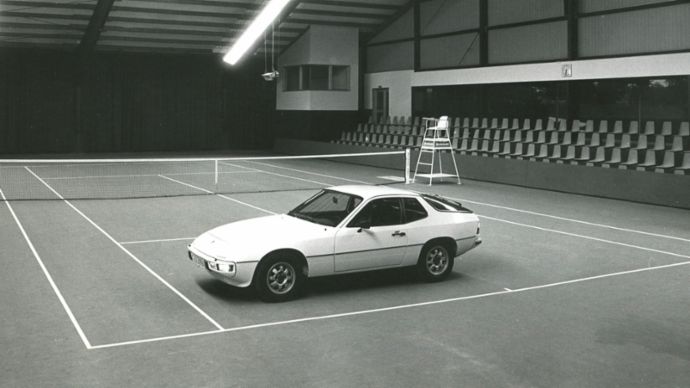
In the meantime, engines have become more powerful, interiors are less purist. The winner’s car has however remained an integral part of the tournament DNS, and the tournament is famous all over the world as a result.
It adds up to 43 winner’s cars, each prominently positioned on Centre Court. It is not only the best motivation for the players, it is, visible for every one of the 4,500 spectators, also a highlight in the stylish Porsche Arena. Or as the two-time Porsche Tennis Grand Prix winner Angelique Kerber puts it: “You see the winner’s car the whole week long. It definitely produces an extra portion of motivation and turbo.”
Planned for this year was a Porsche 911 Turbo S Cabriolet – a dream of a car with 650PS (478 kW; fuel consumption combined 11.3 l/100 km; CO2 emissions 257 g/km) and a top speed of 330 km/h. The powerhouse sprints from 0 to 100 km/h in 2.8 seconds, as quick as a couple of blinks of the eye. It is the flagship of the 911 range. With currently the most powerful 911 engine, it has two VTG turbochargers guaranteeing 70 PS more performance than the previous model. Never has a Porsche had so much power. One could also say – as the bearer of over 70 years of sports car experience, the new 911 Turbo S is the perfect sports car.
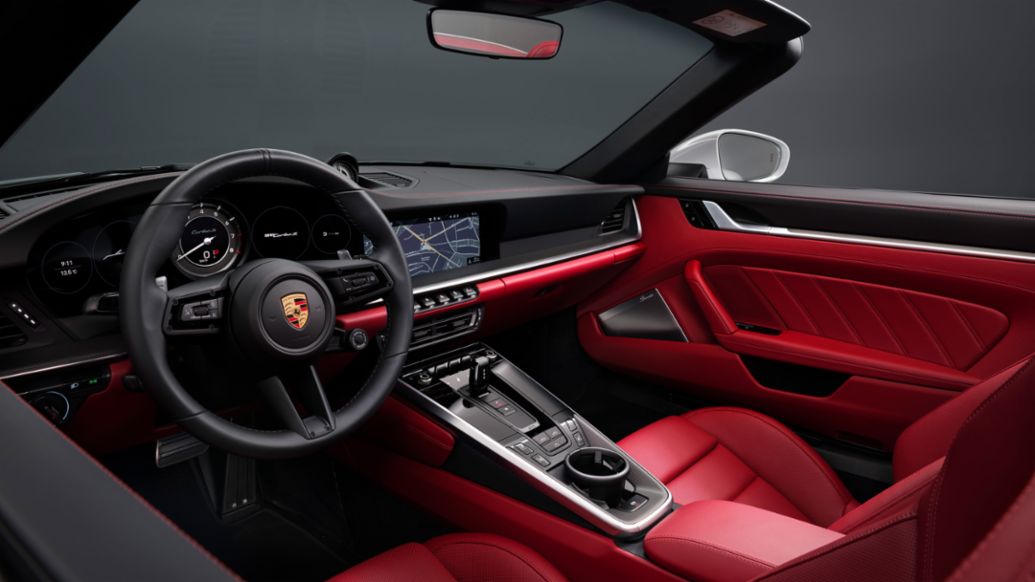
The first 911 turbo in the history of the tournament – a speed yellow 480 PS Cabriolet was won by Justine Henin in 2007. The current version of the eighth generation of 911 Turbo models outdoes the previous 997 model by 170 PS. In comparison, the first ever 911 Turbo dating back to 1974 delivered 260 PS from three litres displacement giving a top speed of 250 km/h.

The new Turbo S costs from 231,747 euro. To be able to afford it, one has to reach the last 16 of a grand slam tournament. At the Porsche Tennis Grand Prix, the car comes with the winner’s purse totalling about 138,000 euro. Therefore, it is no wonder all the stars talk of a dream car. There is prize money at all the world’s tournaments – a Porsche is a unique feature on the Tour and it has been that way for more than four decades. Only the winner of the Porsche Race to Shenzhen has also received a sports car as a prize since 2017.
Martina Navratilova, one of the most successful women players in the history of tennis, has alone won six models at the Porsche Tennis Grand Prix. The American is a Porsche fan: “I love the speed, I love the sound.” Her first sports car from Zuffenhausen – a 911 SC Cabriolet in the fitting colour of “grand prix white”. Her last one was a 911 Carrera Cabriolet in 1992. Her highlight was a drive in the legendary 959 which was never on offer as a winner’s car – driving 300 km/h down the traffic-free autobahn. Not having a speed limit was simply heaven for the USA resident Navratilova.
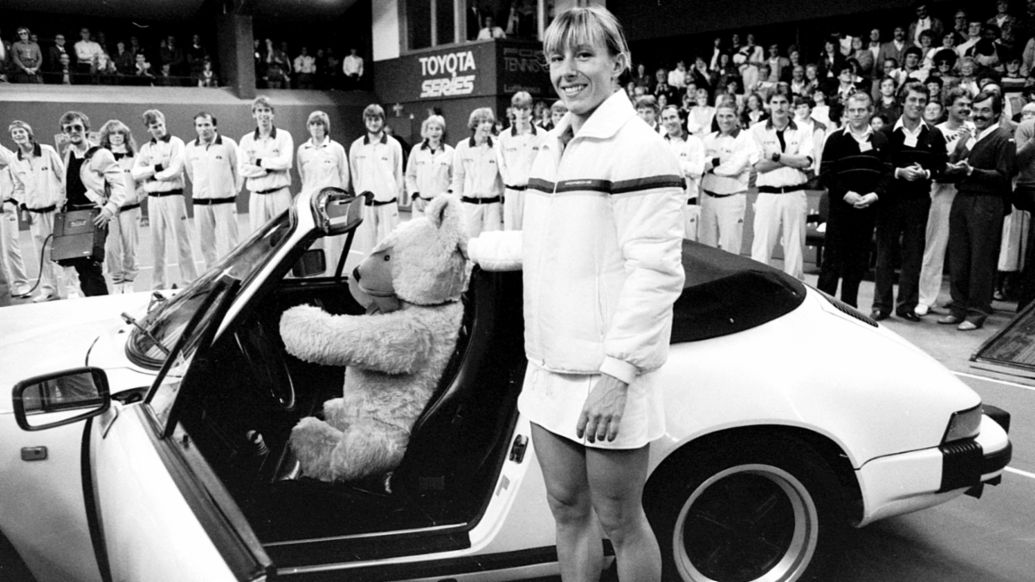
Martina Navratilova almost ended up with seven winner’s cars but she lost the epic 1991 final to the current Operating Tournament Director Anke Huber. Though the then 16-year old won the Porsche, she was not allowed to drive it at the time. She therefore simply repeated the feat three years later when claiming the title and Porsche number two by beating Mary Pierce in the final.
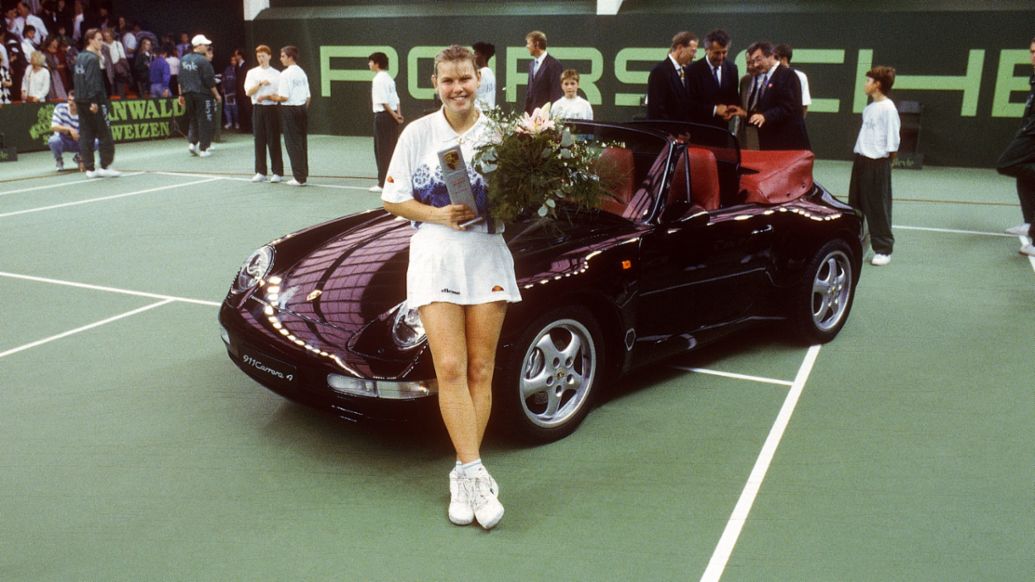
The 43rd winner’s car of the time-honoured tournament will unfortunately only be presented to the victor in the coming year. The tennis stars therefore have to wait patiently until 25 April 2021 – the day when the next final of the Porsche Tennis Grand Prix will take place. Which highlight will be awaiting the winner is yet to be decided.
For the Brand Ambassador Angelique Kerber it is a case of: “I’ve been able to drive a few models now but for me the 911 is an icon that stands for the Porsche feeling like no other car.”


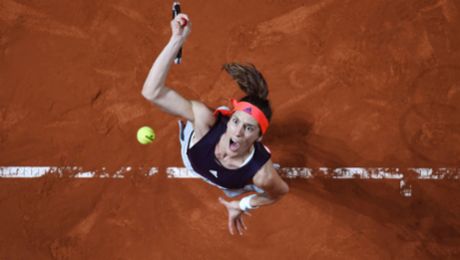
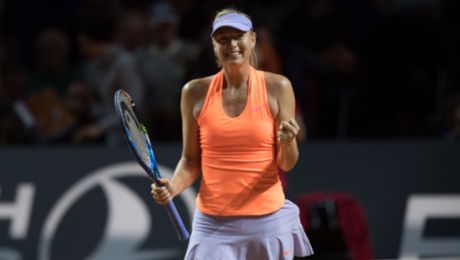
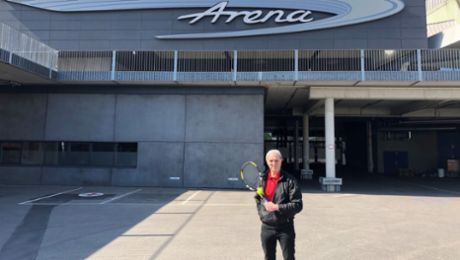
.jpg/jcr:content/b-2.2.1%20Impressionen%202018%20(12).jpg)